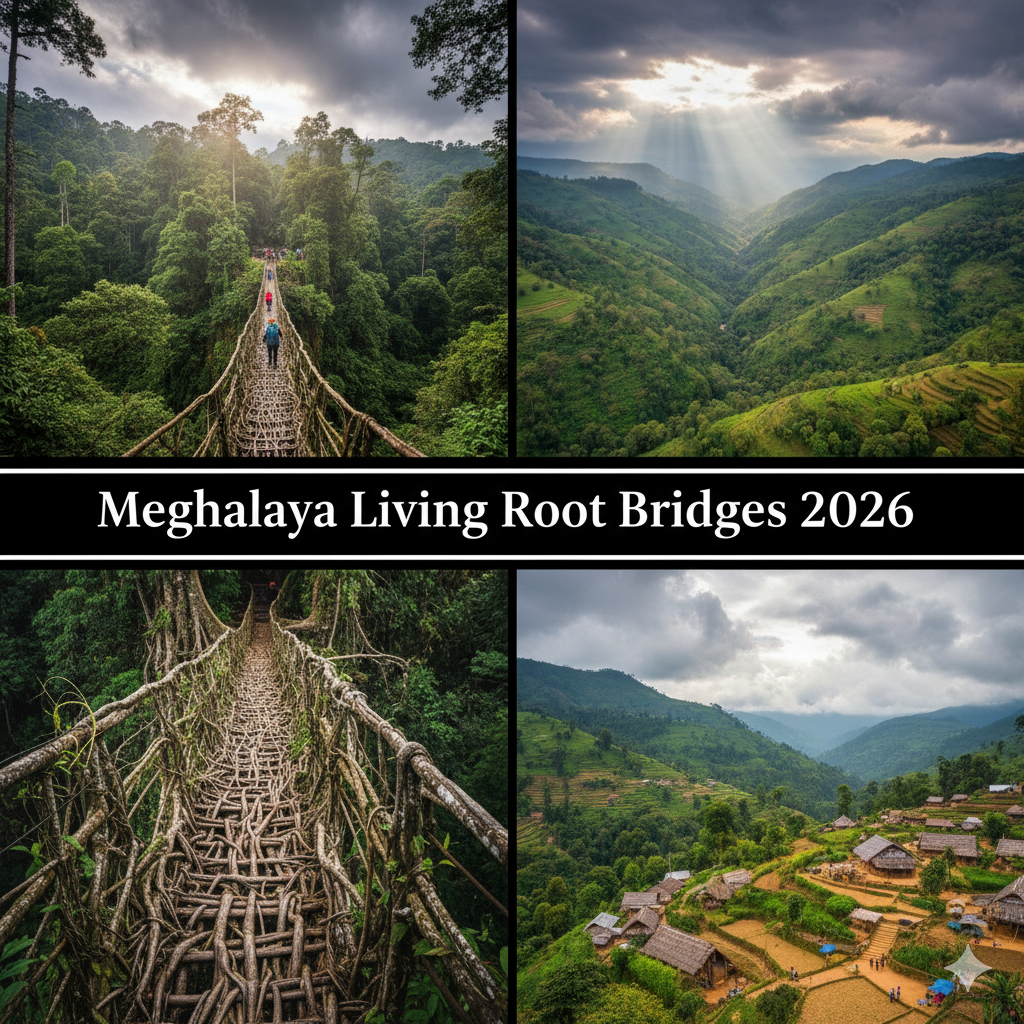Where Nature and Culture Intertwine
Imagine crossing a bridge made not of steel or wood, but of living roots that have grown strong and steady over centuries. Welcome to Meghalaya, India’s “Abode of Clouds,” where the natural world and human ingenuity have blended seamlessly to create one of Earth’s most astonishing wonders — the Meghalaya Living Root Bridges.
These aren’t just tourist spots; they’re living ecosystems, nurtured by local Khasi and Jaintia tribes for generations. In 2026, Meghalaya is once again in the spotlight as sustainable tourism takes center stage, and travelers seek authentic, eco-friendly experiences.
This is the story of the Meghalaya Living Root Bridges — where nature, tradition, and time work hand in hand to remind us what true sustainability looks like.
What Exactly Are the Meghalaya Living Root Bridges ?
The Meghalaya Living Root Bridges are extraordinary pieces of natural engineering — self-growing, self-repairing, and eco-resilient structures formed by guiding the aerial roots of Ficus elastica (Indian Rubber Fig Tree) across streams and valleys.
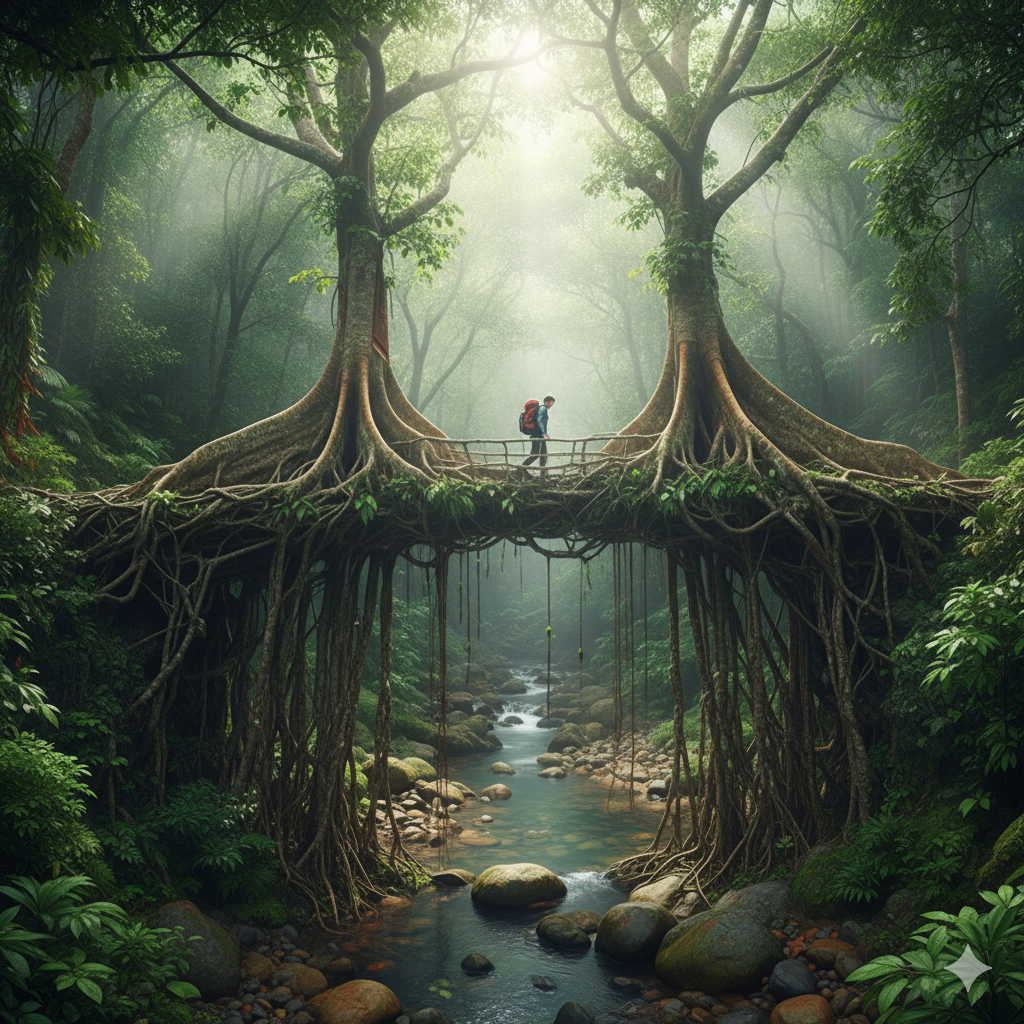
Over years, sometimes even decades, these roots strengthen into sturdy bridges capable of supporting dozens of people. Unlike man-made bridges that deteriorate over time, these living marvels only grow stronger with age.
It’s as if nature itself decided to become an architect — and the Khasi and Jaintia people served as her apprentices.
History and Cultural Significance Meghalaya Living Root Bridges
The origins of these bridges date back more than 500 years. The Khasi and Jaintia tribes, who inhabit Meghalaya’s humid hill regions, developed this ingenious method to connect their remote mountain villages separated by deep valleys and rivers.
But these bridges aren’t just pathways — they represent community, cooperation, and coexistence. Every generation contributes to maintaining them, ensuring that this legacy endures through centuries.
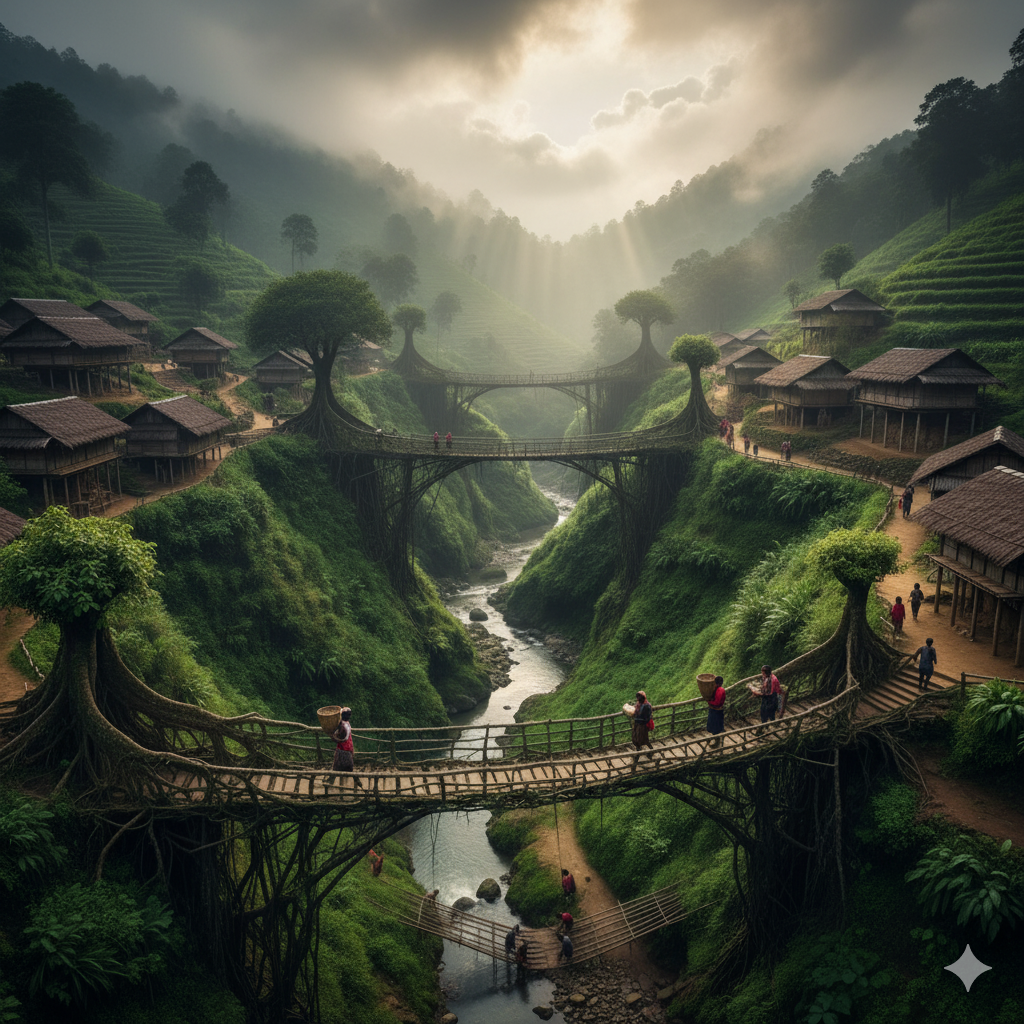
In Khasi culture, these bridges are symbols of life and resilience. They’re often associated with folklore and songs passed down through oral traditions. For the tribes, these bridges are sacred — a reminder that humans and nature can thrive together.
Famous Meghalaya Living Root Bridges to Visit in 2026
If you’re planning a Meghalaya trip in 2026, here are the must-visit Living Root Bridges that deserve a spot on your itinerary:
a) The Double Decker Root Bridge, Nongriat
The world-famous Umshiang Double Decker Root Bridge in Nongriat Village is the most iconic of them all. Two levels of intertwined roots create a breathtaking structure amid lush rainforest scenery. It takes about 3,000 steps from Tyrna village to reach it — but every step is worth it.
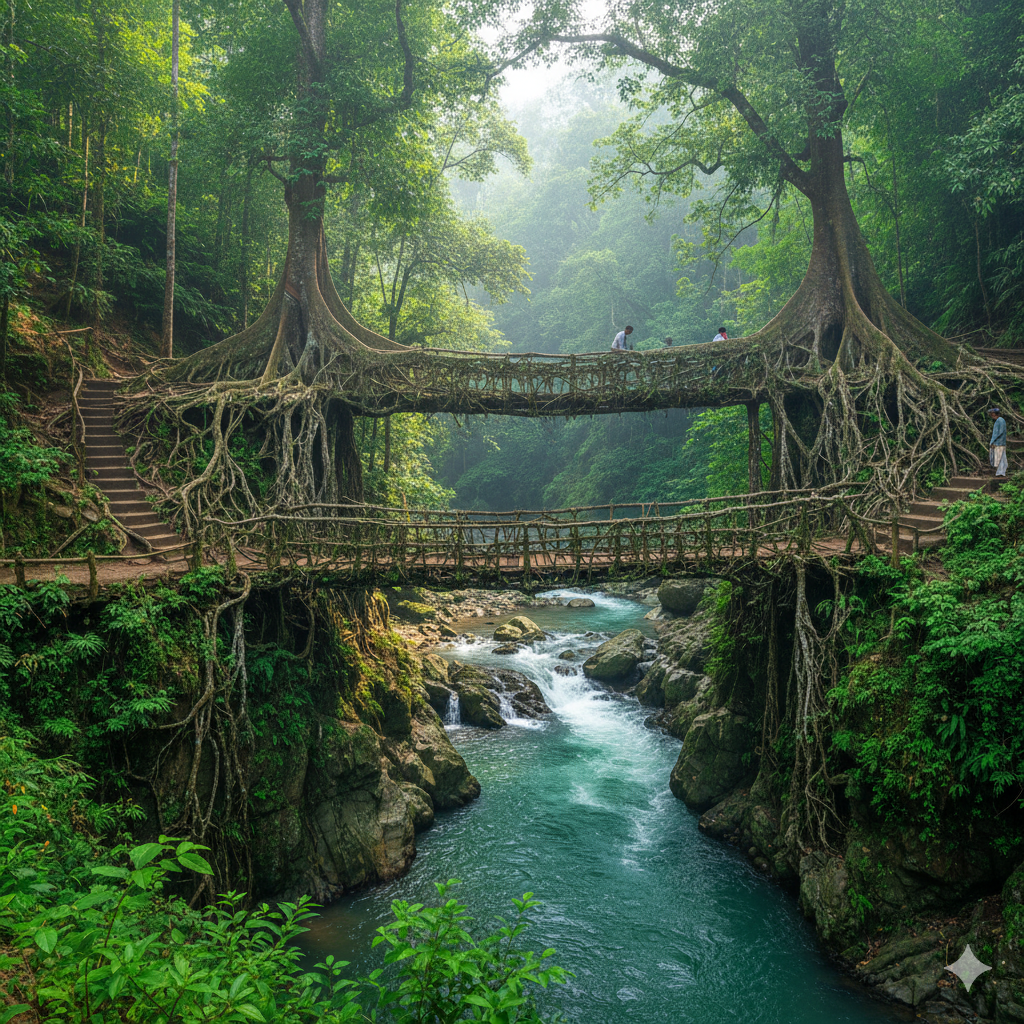
b) Riwai Single Root Bridge, Mawlynnong
Near Asia’s cleanest village, Mawlynnong, this single-level root bridge is more accessible. It’s perfect for travelers seeking beauty without an intense trek.
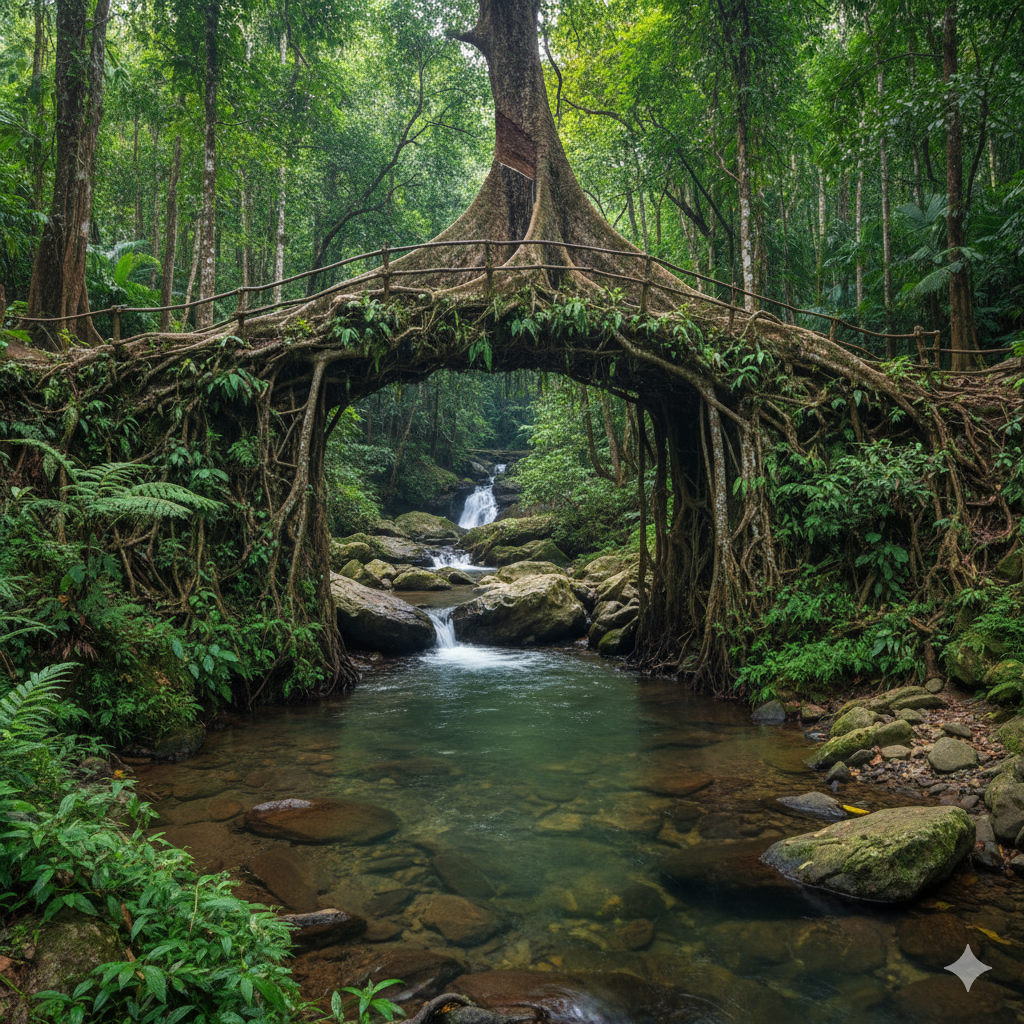
c) Nongthymmai & Laitkynsew Bridges
Hidden in dense jungle, these lesser-known bridges offer a tranquil, offbeat experience. Ideal for photographers and nature lovers looking to avoid crowds.
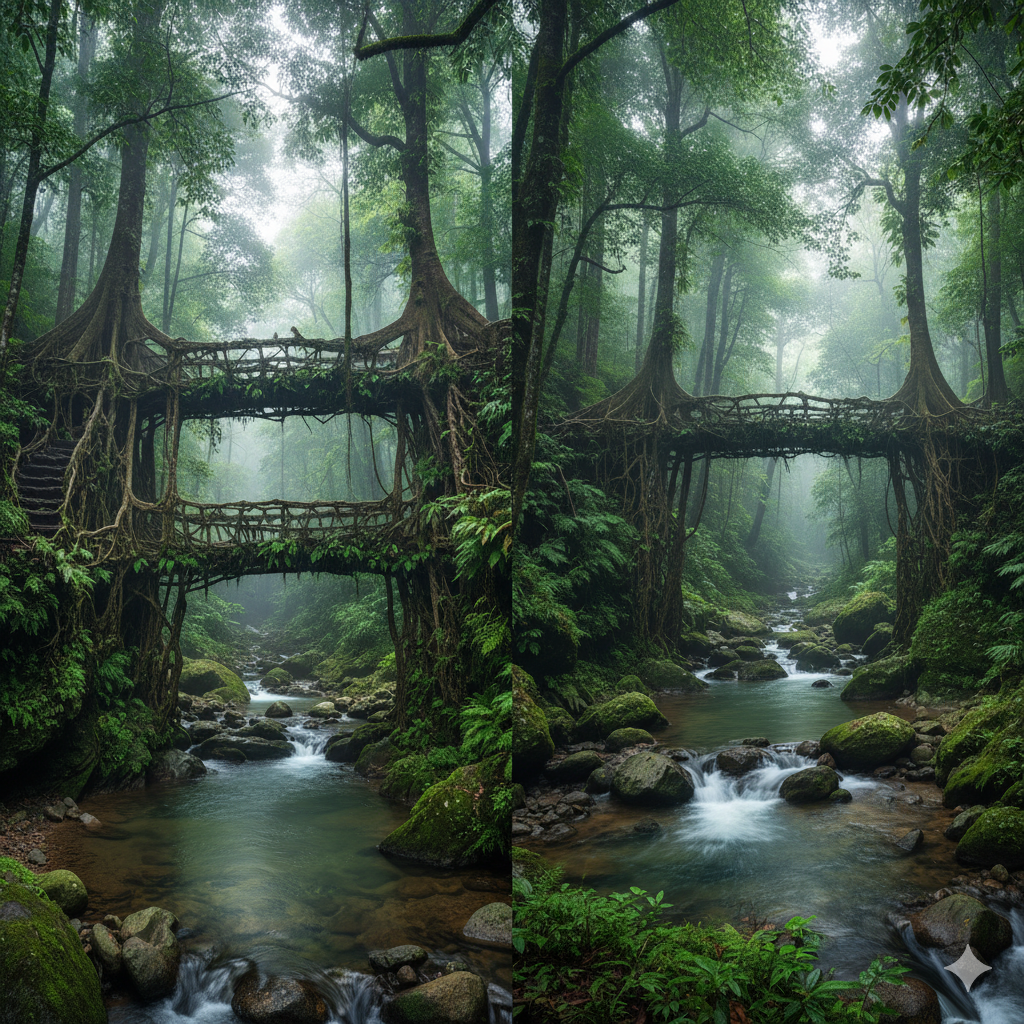
d) Umkar Root Bridge, Nohwet
A short hike from Mawlynnong, this bridge combines the charm of traditional craftsmanship with the serenity of surrounding waterfalls.
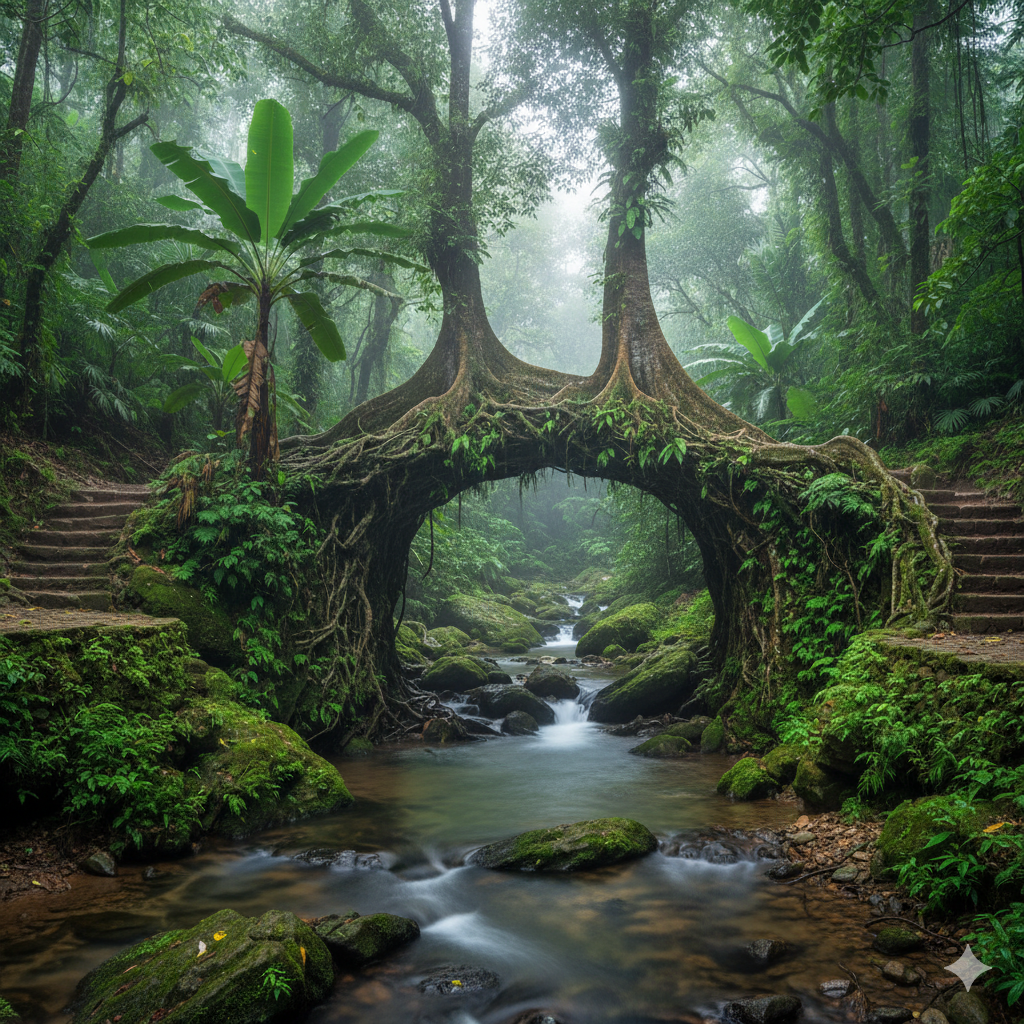
Tip: Visit early morning for mist-covered bridges and golden light filtering through the rainforest — a photographer’s dream!
Sustainable Tourism and the 2026 Conservation Drive
As Meghalaya’s popularity grows, so do concerns about preserving its delicate ecosystem. In 2026, the Meghalaya Tourism Department and local communities are implementing eco-tourism guidelines to protect these natural wonders from over-tourism.
Key initiatives include:
- Limiting daily visitor numbers
- Promoting guided treks with certified eco-guides
- Encouraging “leave no trace” practices
- Supporting homestays that directly benefit tribal families
Traveling responsibly here means more than just taking beautiful photos — it’s about protecting a living legacy that has survived for centuries.
The Science Behind the Wonder
The beauty of these bridges lies in bioengineering genius long before the term existed. The Khasi people realized that Ficus elastica roots can grow horizontally when guided using bamboo scaffolding. Over 15–30 years, the roots intertwine, fuse, and thicken, becoming strong enough to support human weight.
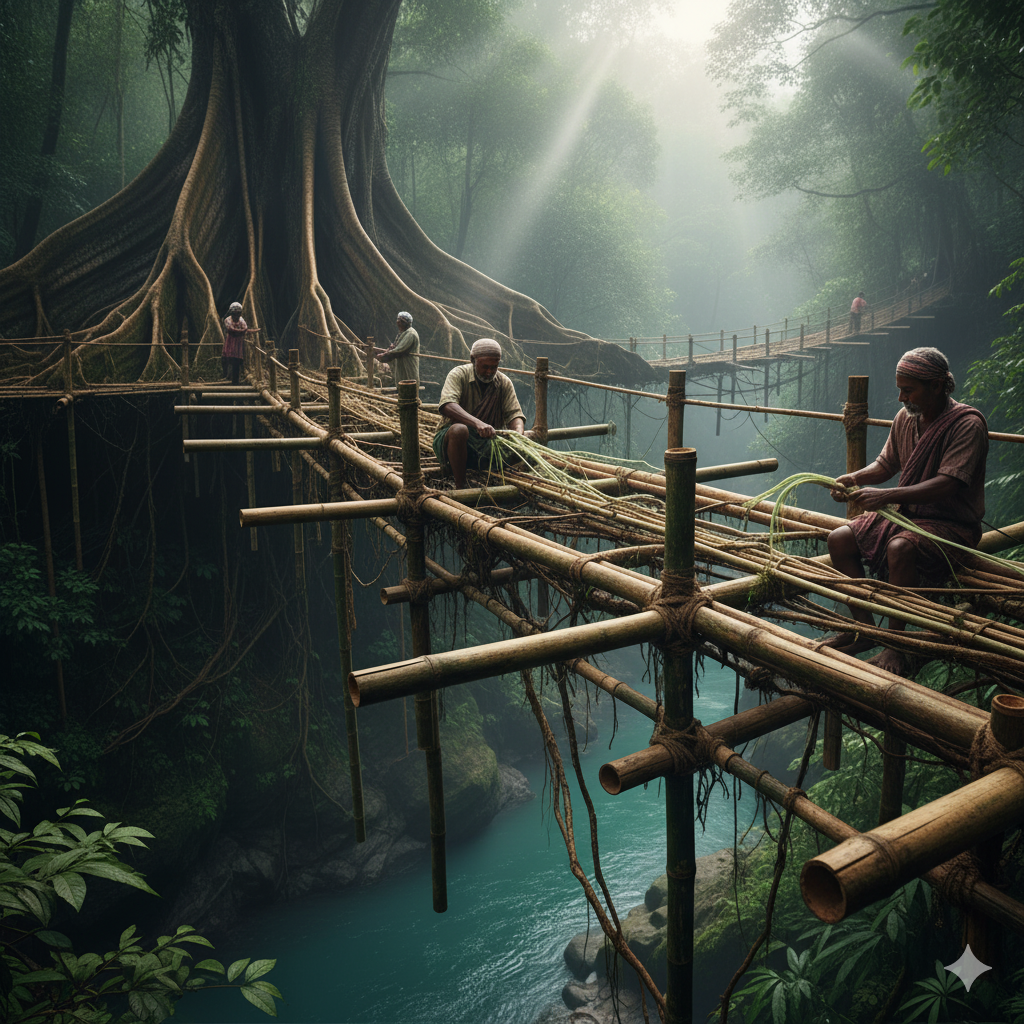
Unlike concrete, these bridges:
- Absorb carbon instead of producing it
- Adapt to floods and weather
- Require no industrial materials
- Continue strengthening with time
They’re not just bridges — they’re living proof of biomimicry and climate resilience.
Local Communities and Living Traditions
Behind every root bridge is a story — of people, patience, and purpose. Local Khasi families spend years tending to the growing roots, often teaching the craft to their children.
When you trek these trails, you’re not just visiting nature; you’re walking through a living classroom of indigenous wisdom.
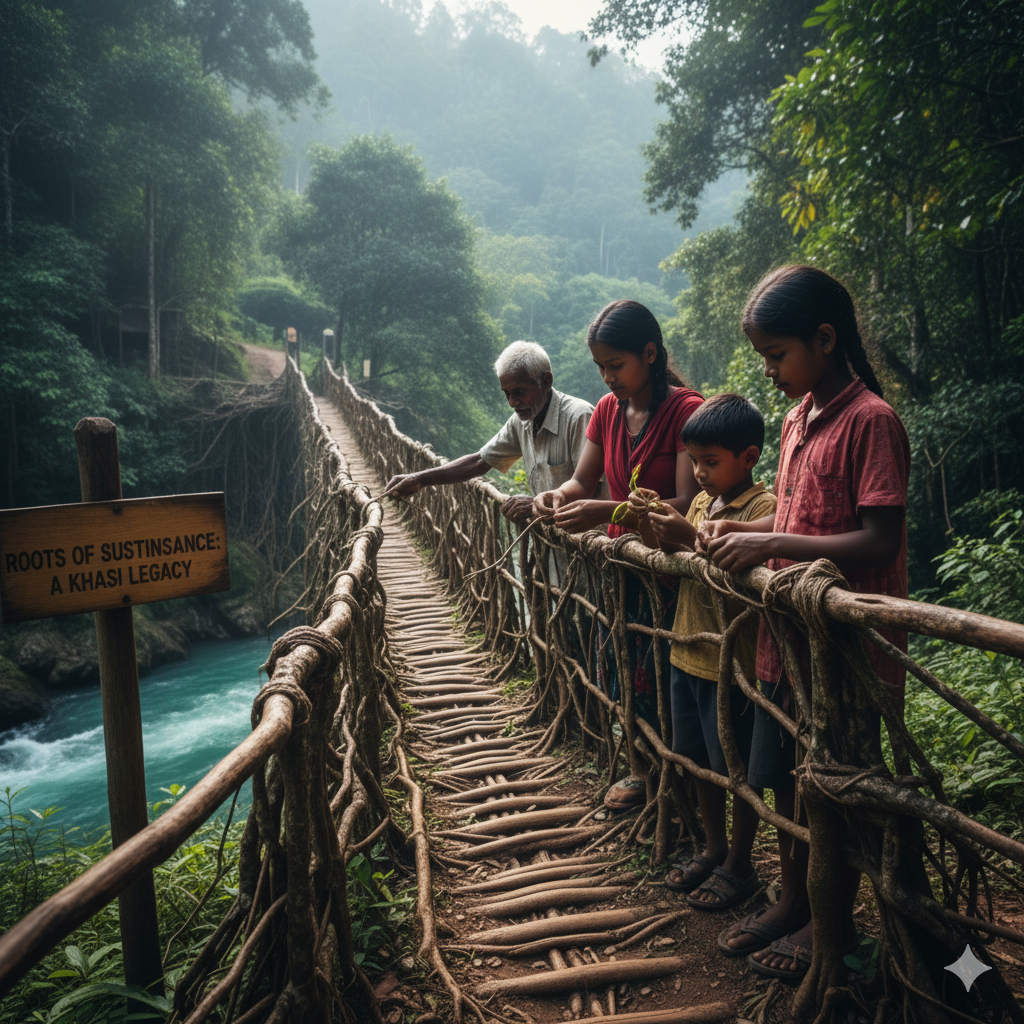
Many homestays in Nongriat and Laitkynsew allow travelers to experience Khasi hospitality firsthand — sharing traditional meals like Jadoh (rice and meat dish) and hearing stories of how their ancestors shaped the forest with their hands.
How to Reach Meghalaya Root Bridges in 2026
Nearest Airport: Shillong Airport (Umroi)
Nearest Major City: Shillong (approx. 2–3 hours drive to Tyrna Village)
Base Point for Trek: Tyrna Village near Cherrapunji (Sohra)
Recommended Route:
- Guwahati ➜ Shillong ➜ Cherrapunji ➜ Tyrna ➜ Nongriat
- Stay overnight in Nongriat or Laitkynsew for full experience
Travel Tip:
Plan for 2 days minimum to explore comfortably. Avoid monsoon months (June–September) when trails can be slippery.
Best Time to Visit Meghalaya Living Root Bridges
October to April is the ideal time for pleasant weather and clear skies. The monsoon months, though lush and dramatic, make treks challenging.
Each season, however, offers its own magic — misty monsoon moods or sun-drenched post-rain greenery.
Check Also: US Green Card 2025
Meghalaya Beyond the Living Root Bridges
Your journey doesn’t end with the bridges. Meghalaya is a treasure chest of natural wonders:
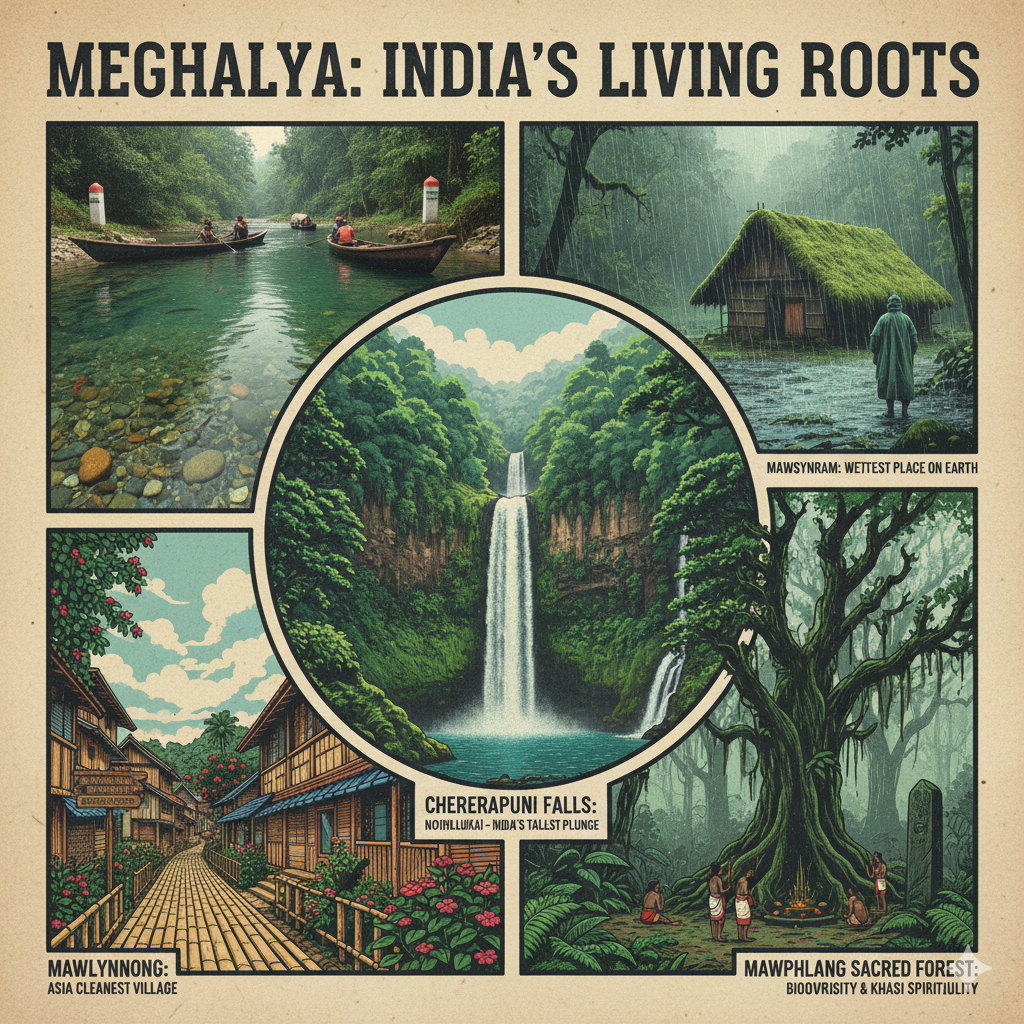
- Dawki River: Crystal-clear waters and boating between India and Bangladesh
- Mawsynram: The wettest place on Earth
- Cherrapunji Waterfalls: Including Nohkalikai, India’s tallest plunge waterfall
- Mawlynnong Village: Asia’s cleanest village
- Mawphlang Sacred Forest: A biodiversity hotspot tied to Khasi spiritual traditions
Each destination offers a glimpse into Meghalaya’s heart — wild, green, and deeply spiritual.
Source: Meghalaya Tourism Official Website
Future of the Living Root Bridges: From Local Heritage to Global Symbol
In 2026, Meghalaya’s Living Root Bridges are being nominated for UNESCO World Heritage status — a move that recognizes their global ecological and cultural value.
The goal is not just tourism, but preservation — ensuring that these bridges continue to grow for future generations.
These bridges remind us of a crucial truth: real progress isn’t in replacing nature, but in growing with it.
A Living Legacy of Balance and Beauty
As you stand on a living root bridge, surrounded by misty hills and the sounds of the forest, you realize something profound — this isn’t just a structure, it’s a living heartbeat of the earth.
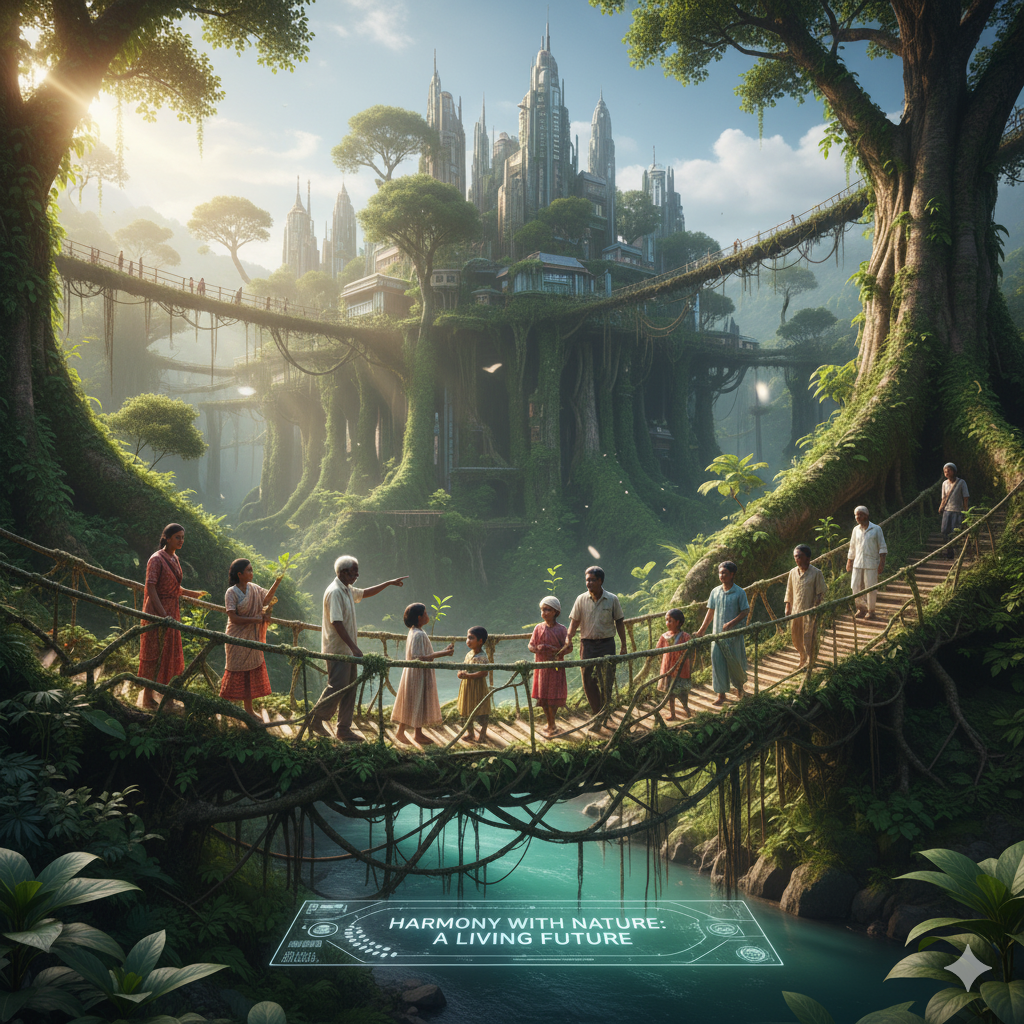
The Meghalaya Living Root Bridges aren’t relics of the past; they’re guides to the future — teaching humanity that harmony with nature isn’t a fantasy, but a living, breathing possibility.
If you seek a travel experience that’s raw, real, and deeply transformative, Meghalaya in 2026 awaits — with bridges that don’t just connect lands, but connect souls.

